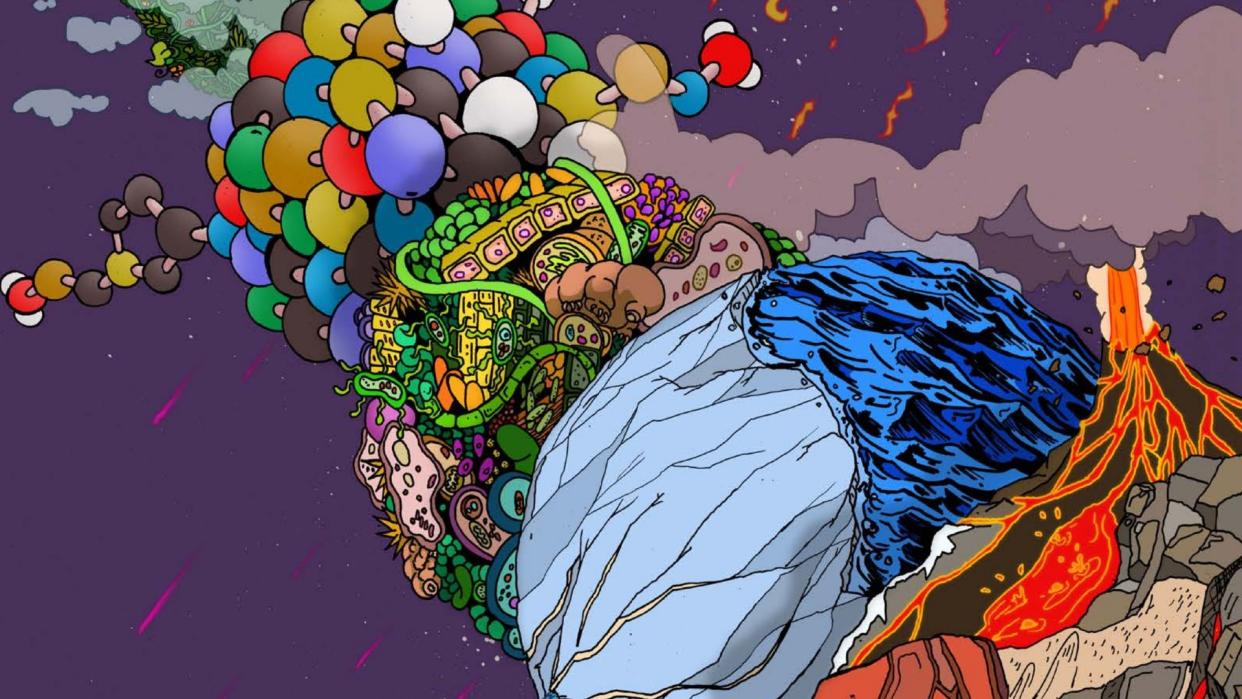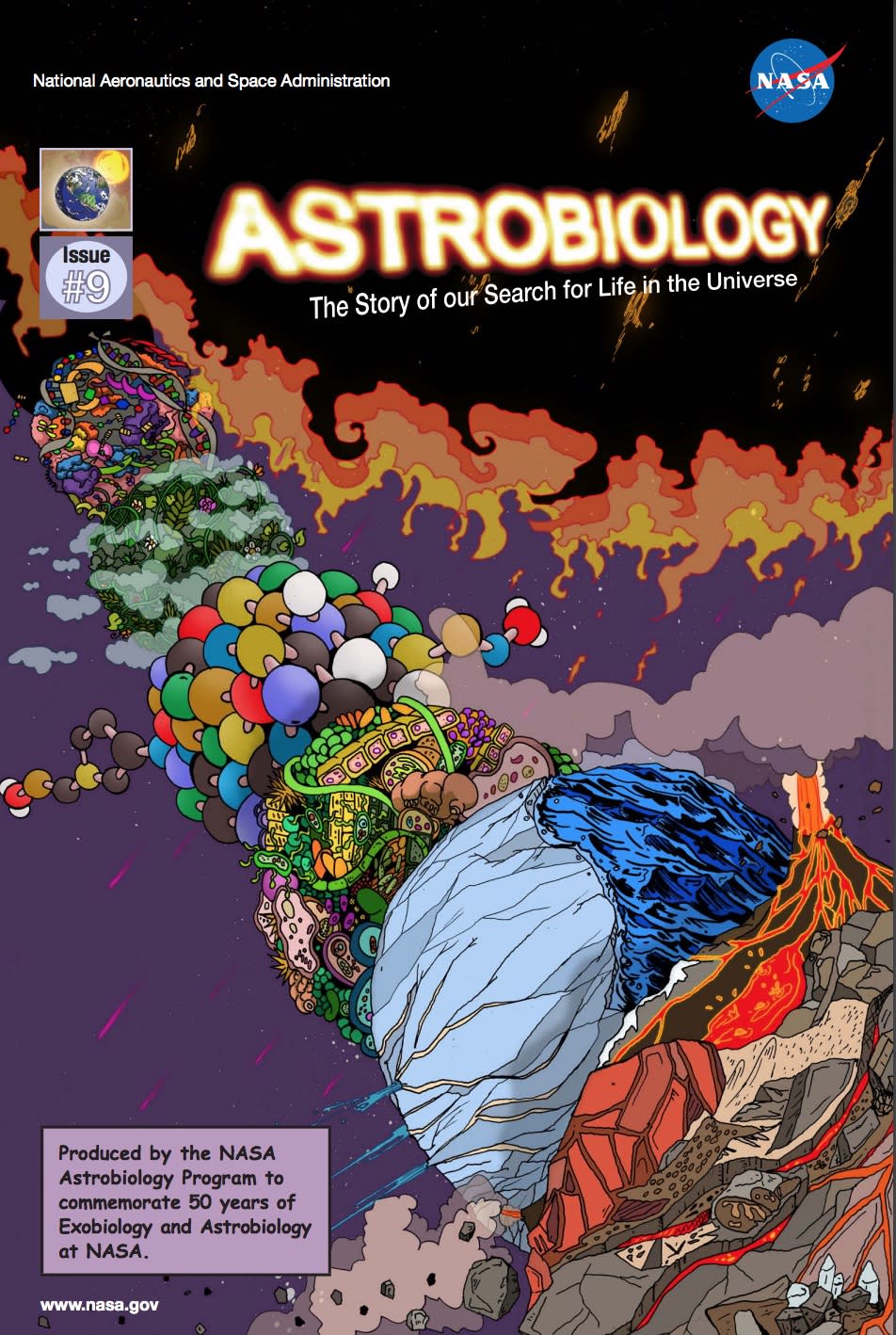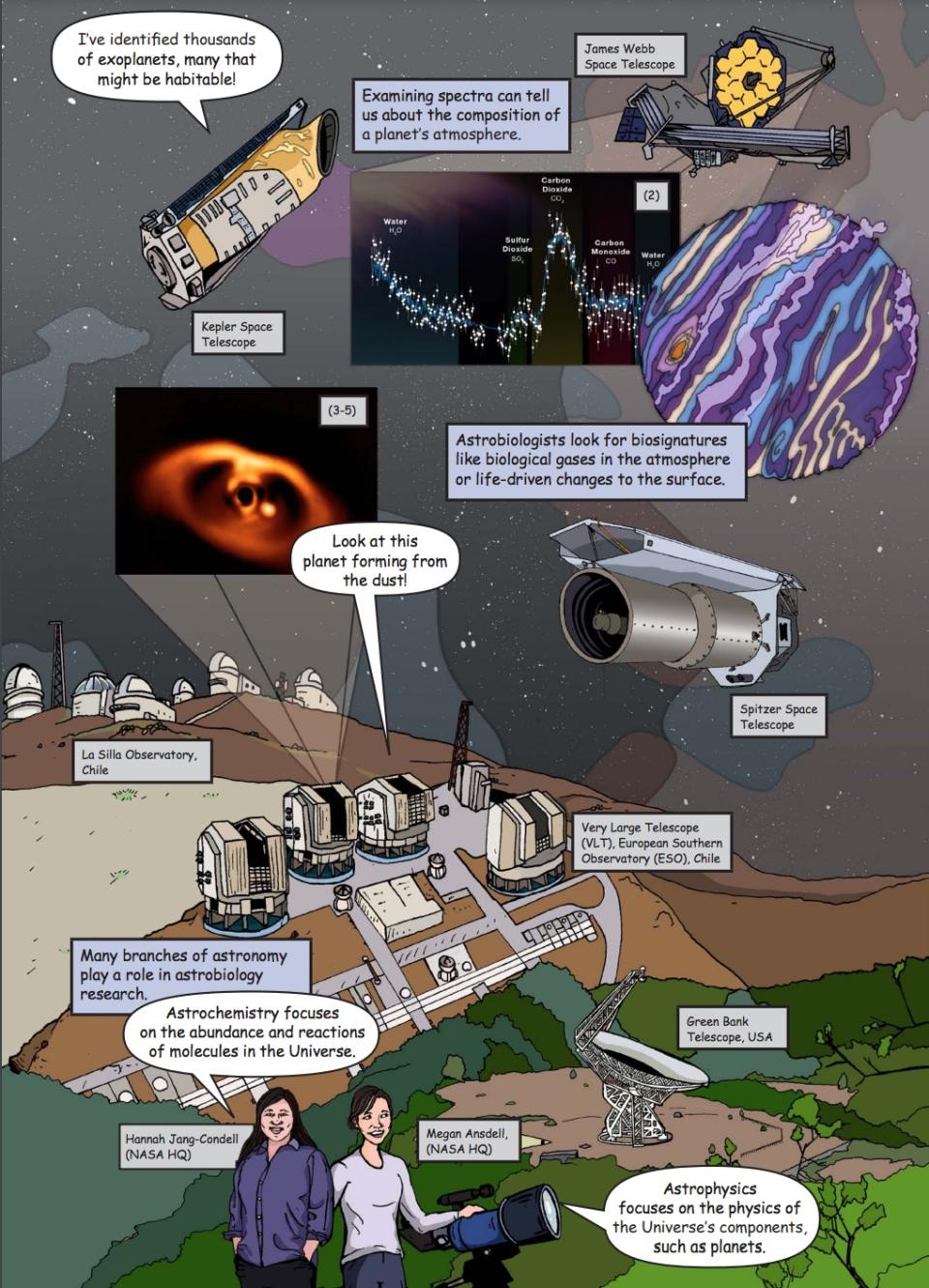Learn how to become an astrobiologist in new issue of NASA's graphic novel series

The growing field of astrobiology studies the origins and future of life in the universe.
NASA is hoping to entice space fans of all ages to learn more about the field with ambitious and successful outreach programs, and the latest edition in their "Astrobiology" series of graphic novels is fully fueled with 28 pages of informative storytelling for comics fans and future scientists of all abilities to ingest and enjoy.
The ninth and most recent issue of this graphic history publication was just released by NASA last week. It's an educational volume that explores various career paths found in the fascinating field of astrobiology, which includes the study of the origin, evolution, and distribution of all lifeforms in the universe.
Related: What is astrobiology?
Here's the official description of the contents inside:
"The Story of our Search for Life in the universe answers one of the biggest questions of all… 'How do I become an astrobiologist?' Are you curious about the origin of life on Earth and the potential for life beyond our planet? Do you want to answer questions about habitability and life's existence in the universe? This issue talks about the journey to becoming an astrobiologist. Turn the pages to learn everything from what to study in school to opportunities for starting a career as a scientist. If you aspire to become an astrobiologist, this issue is your guide!"

"Astrobiology #9" features the lyrical artwork of Dr. Aaron L. Gronstal of NASA's Astrobiology Program Office, with a story by Dr. Mary Voytek and Dr. Linda Billing.
As noted in the opening pages, 2010 marked the 50th anniversary of Exobiology and Astrobiology research and discovery at NASA. In commemoration, the Astrobiology Program created this Astrobiology Graphic History project to honor the personalities and formative events that determined the origins of these vital scientific disciplines.

RELATED STORIES:
— Life on Enceladus? Europe eyes astrobiology mission to Saturn ocean moon
— NASA+ streaming service launches with all-new original series (video)
— NASA's latest 'Curious Universe' podcast showcases our life-giving star
Previous issues have covered the following intriguing topics: Issue 1: The Origin of Science, Issue 2: Mission to Mars, Issue 3: Missions to the Inner Solar System, Issue 4: Missions to the Outer Solar System, Issue 5: Astrobiology and Earth, Issue 6: Living Beyond the Solar System, Issue 7: Prebiotic Chemistry and the Origin of Life, and Issue 8: Biosignatures.
"Astrobiology #9" is available as a PDF download to your laptop, desktop, tablet or mobile device at NASA's online site HERE, along with the complete series for free.

